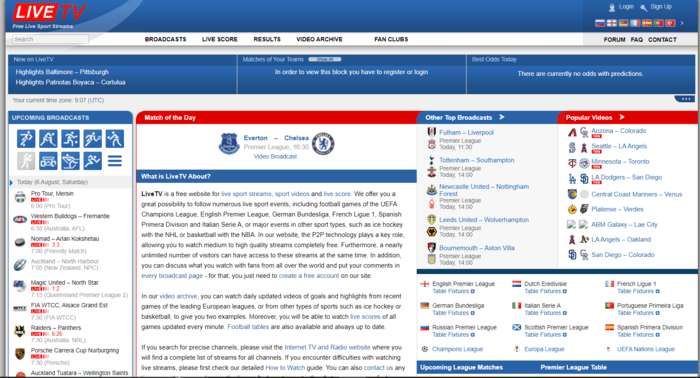Compliance with data security regulations has certainly become essential for organizations that store sensitive data. Regulations such as HIPAA, PCI-DSS, or GDPR of the EU (probably the most known personal data protection standard) require strict access controls and other measures to protect the confidentiality, availability, and integrity of sensitive data. Not having these precautions, or simply being non-compliant, can end up costing businesses millions.
The potential consequences of being non-compliant are indeed scary, but there are great tools and technologies that help organizations achieve compliance easily and effectively. Identity and Access Management is one of these components, which is critical to compliance. It refers to the processes, policies, and technologies used to manage access
and protect sensitive information. IAM allows organizations to control user access, enforce security policies, and monitor all activities within their network.
In this article, we’ll dive deep into the role of IAM in meeting compliance regulations and saving your organization from those costly penalties. We will talk about what an IAM solution does and how it helps you overcome compliance challenges. Keep on reading to learn all about it.
Compliance Regulations and IAM
Security regulations have strict standards to make sure the sensitive data stored in organization networks are secured from prying eyes. These standards enforce organizations to implement certain processes and have the proper access control mechanisms along with other advanced technologies. The main focus of these regulations is to ensure the confidentiality, integrity, and availability of sensitive data.
Due to covering one of the most important aspects of these regulations (access control), IAM is crucial to achieving compliance. Identity and Access Management helps organizations set up digital identities, manage every part of their life cycle, control access to resources, and track user activity. These solutions also provide audit logs and reports, which are highly useful when demonstrating compliance to the auditors.
For example, PCI-DSS requires organizations that handle credit card information to use strict access control technologies. IAM solutions would be helpful to them by providing multi-factor authentication, role-based access control, and encryption. In the following section, we will talk about how modern IAM solutions work and what are their key features.
IAM Features and Benefits for Compliance
A modern Identity and Access Management solution offer several great features to help organizations with compliance. We gathered what we believe are some of the key features IAM offers for compliance, see below:
Authentication and Authorization
One of the best features of IAM solutions is their ability to provide effective authentication and authorization processes. Robust authentication ensures that only authorized users have access to sensitive information. This lets organizations comply with access control standards of the regulations they are bound to.
Identity Governance
The term identity governance includes capabilities such as role-based access control, identity analytics, and entitlement management. These features allow organizations to align user access with company security policies and compliance standards.
Data Protection
IAM solutions go above and beyond in terms of security and provide data protection features such as encryption, masking, and tokenization. Security regulations require organizations to have strong data protection abilities, and IAM is an effective component that reinforces overall security in a network.
Audit and Reporting
Audit logs and reports are crucial to demonstrating compliance to the auditors. IAM solutions provide the necessary audit logs to track user activity and monitor for any potential vulnerabilities. This helps organizations comply with audit requirements of various regulations.
Scalability and Flexibility
IAM solutions are usually highly scalable and flexible, which are both great features to have. Compliance requirements are always changing along with the business needs of a company; so scalability and flexibility enable organizations to keep up with these changes.
Common Compliance Challenges and IAM Solutions
Compliance regulations such as GDPR, HIPAA, and PCI-DSS have very strict security requirements, and organizations sometimes face challenges meeting these standards. Below, you’ll find some of the most common compliance challenges, and how modern IAM solutions can help overcome them.
Enforcing Security Policies
Protection of sensitive data requires organizations to have strict security policies, and the ability to enforce them to the users. As we mentioned above in our best features list, IAM solutions provide identity governance capabilities to help them enforce policies effectively.
Managing User Access
One of the biggest challenges of compliance is managing digital identities and user access to sensitive data. With that being said, perhaps the most prominent benefit of IAM solutions is offering centralized management of user identities, letting organizations implement robust access controls.
Managing Third-Party Access
Organizations work with a number of companies that need access as a third party. This can be a big issue if not handled properly, the access given to third parties should be aligned with company policies and security regulations, and be kept separate from internal access permissions. IAM solutions help organizations overcome this by streamlining third-party access while hiding sensitive information from them.
In order to reduce the risk of security breaches and meet compliance requirements, companies can leverage IAM solutions. In the next section, we will discuss best practices in implementing an IAM solution for compliance.
Implementing a Modern IAM Solution
The implementation of a modern IAM solution requires careful planning and great execution. Remember, if you want to get the most out of what you paid for, it is essential to give importance to the implementation process. Here are some of the best practices for implementing an IAM solution.
Define Requirements
It is a great idea to start by defining your business and security requirements. The first step should always be identifying the compliance regulations that apply, and then defining the type of data that needs to be protected. Lastly, the user groups that need access to certain resources.
Conduct a Risk Assessment
In order to know your security needs, conducting a risk assessment is the first thing you need to do. It helps you identify vulnerabilities and potential risks to sensitive information, which will then be useful to detect the security level you need in the organization. The results also inform you about the selection and implementation of the IAM solutions.
Choose the Right Solution
There is a plethora of IAM solutions in the market. The best one is the one that meets your business requirements. Check out the features they offer and see if they cover your needs, and make sure it is flexible and scalable since you will need it to be compatible when the organization grows.
Plan for Integration
IAM solutions usually integrate with other systems such as CRM or HR. Planning for the integration is essential to ensure that your IAM solution is capable of accessing user data from these systems.
Implement in Phases
IAM implementation can be complex and time-consuming. Keeping in mind the importance of this process is always recommended, so the best practice here is implementing the solution in phases. Start with the most critical requirements and gradually expand.
Train Users
As the last step, it is important to provide training to the users about the importance of the IAM system for compliance, and how they should use it. User adoption of the system is critical to decrease the risk of data breaches and allow them have a streamlined way of accessing resources.








Add Comment